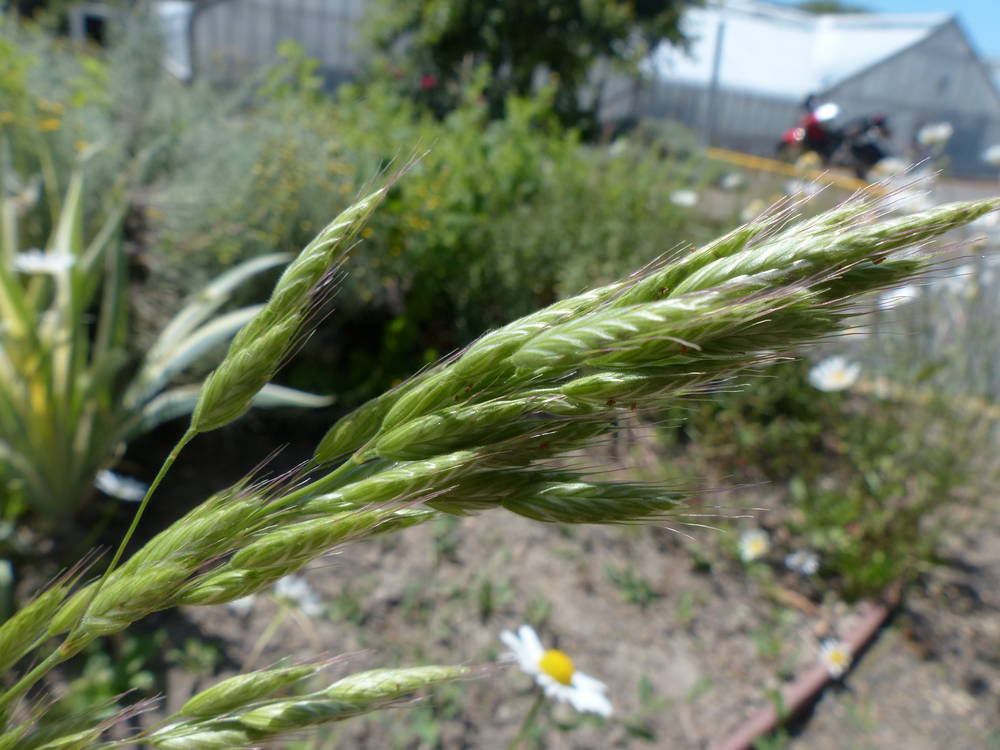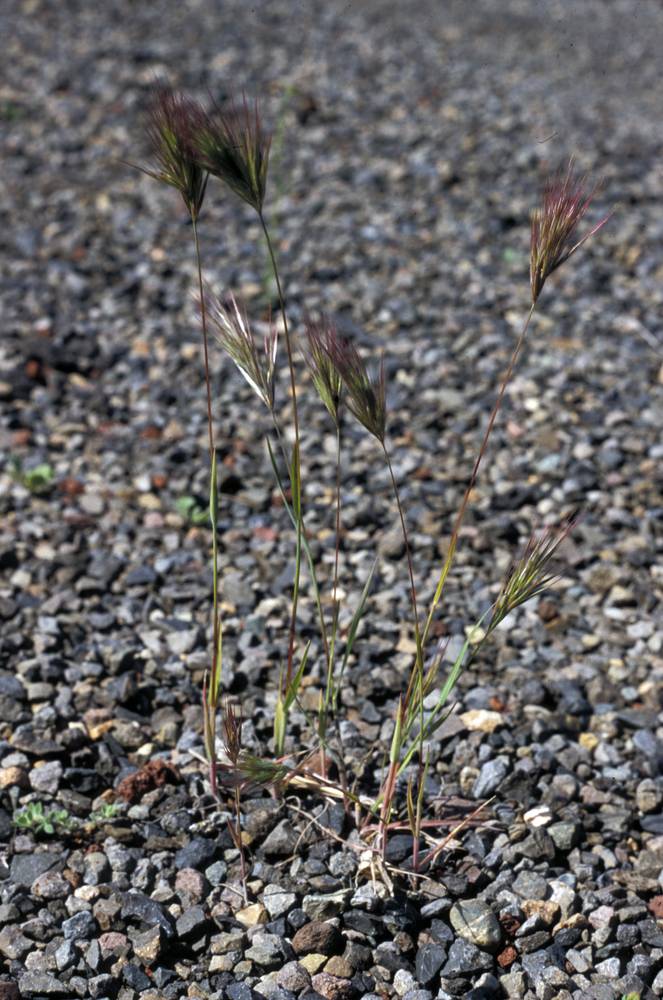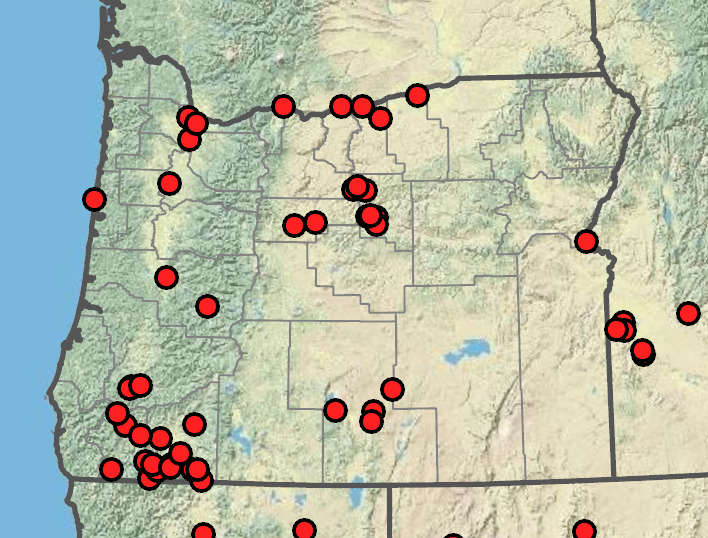Bromus hordeaceus
Bromus rubens
soft chess
foxtail chess, red brome
often puberulent.
lower sheaths densely pilose; upper sheaths pubescent or glabrous;
blades 2–19 cm × 1–4 mm;
lower surfaces glabrous or pubescent;
upper surfaces pubescent.
sheaths softly pubescent to pilose;
blades 1–15 cm × 1–5 mm, pubescent on both surfaces.
1–13 × 1–4 cm; erect, usually ovoid; open at anthesis, becoming contracted and dense, occasionally reduced to 1 or 2 spikelets;
branches usually shorter than the spikelets, ascending to erect; straight or nearly straight.
2–10 × 2–5 cm; erect; dense, often reddish brown;
branches 0.1–1 cm, ascending, never drooping, not readily visible, 1–2 spikelets.
(11)14–20(23)mm, lanceolate; terete to moderately laterally compressed, 5–10 florets;
floret bases usually concealed at maturity;
rachilla internodes concealed at maturity.
18–25 mm; much longer than the panicle branches, densely crowded, subsessile, moderately laterally compressed, with 4–8 reddish florets.
pilose to glabrous;
lower glumes 5–7 mm, 3–5-veined;
upper glumes 6.5–8 mm, 5–7-veined.
pilose;
lower glumes 5–8 mm, 1(3)-veined;
upper glumes 8–12 mm, 3–5-veined.
equal to or shorter than paleas; thin, weakly inrolled to flat.
6.5–11 × 3–5 mm, lanceolate, chartaceous, antrorsely pilose to pubescent, occasionally glabrous near the base or throughout, 7–9-veined; hyaline margins abruptly or bluntly angled, not inrolled at maturity;
lateral veins prominent, thickened and raised;
tips rounded to acute; bifid;
teeth shorter than 1 mm;
lemma awns 6–8 mm, usually arising less than 1.5 mm below the lemma tips; straight to recurved at maturity.
10–15 mm, linear-lanceolate, pubescent to pilose, 7-veined;
margins hyaline;
tips acuminate, with teeth 1–4 mm, awned;
lemma awns 8–20 mm; straight.
0.6–1.5(2)mm.
0.5– 1 mm.
=28.
=14, 28.
Bromus hordeaceus
Bromus rubens
Disturbed areas, degraded grasslands. 0–1900m. All ecoregions except BR. CA, ID, NV, WA; north to AK, south to Mexico, east to Newfoundland and SC; North Africa, southern Europe; scattered elsewhere worldwide. Exotic.
Bromus hordeaceus has been divided into subspecies, two of which may occur in Oregon (B. h. ssp. hordeaceus and B. h. ssp. pseudothominei). Most Oregon specimens, however, cannot be identified confidently to either subspecies.
Disturbed places, bare droughty soils. 0–1400m. BR, Casc, Col, Est, Lava, Owy, Sisk, WV. CA, ID, NV, WA; east to CO and TX; MA, NY; Europe. Exotic.
Similar B. diandrus and B. sterilis usually have nodding inflorescences with the spikelets angling down and much more open inflorescences. Bromus madritensis is very similar to B. rubens with which it is sometimes considered conspecific. Bromus madritensis was collected once on ballast in Portland in 1912 and apparently did not persist. It has a somewhat looser inflorescence with longer, exposed, erect panicle branches.
Barbara Wilson, Richard Brainerd, Nick Otting
Barbara Wilson, Richard Brainerd, Nick Otting
- Local floras:
BC,
CA,
OR,
WA
- Local Web sites:
CalFlora,
CalPhotos,
Flora NW,
PNW Herbaria
WildflowerSearch
iNaturalist (observations)
USDA Plants Database
- LBJ Wildflower Center
- SEINet
- Plants of the World Online
- Encyclopedia of Life
- Wikipedia
- Google Image Search
- Local floras:
BC,
CA,
OR,
WA
- Local Web sites:
CalFlora,
CalPhotos,
Flora NW,
PNW Herbaria
WildflowerSearch
iNaturalist (observations)
USDA Plants Database
- LBJ Wildflower Center
- SEINet
- Plants of the World Online
- Encyclopedia of Life
- Wikipedia
- Google Image Search





